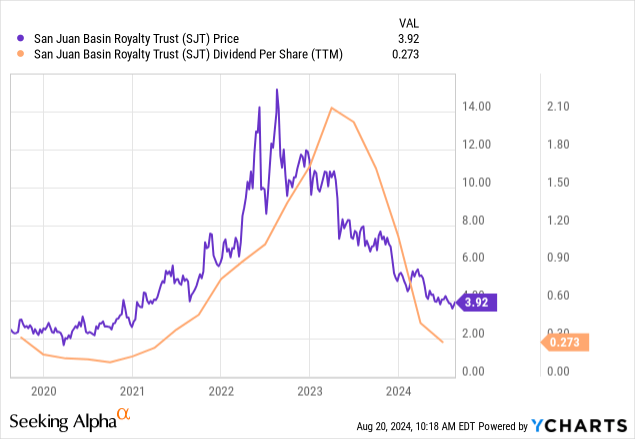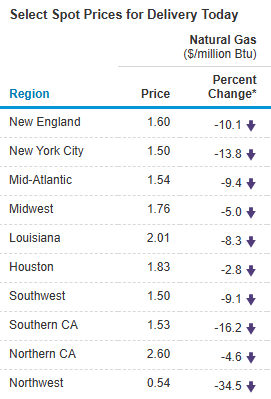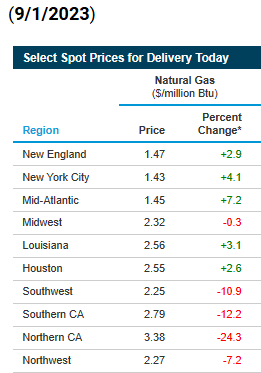San Juan Basin Royalty Trust (NYSE:SJT) investors are currently being hurt by problems associated with overriding royalty interest trusts: the trust gets stuck with CAPEX and the trust can’t hedge. Again, there is no monthly distribution this month and there may continue to be no distributions going forward unless there is a significant increase in natural gas prices in markets that their gas is sold in even if production increases. This is an update to my prior SJT articles.

Large CAPEX Impact on Monthly Distributions
Hilcorp is planning a $34 million CAPEX program this year, which is down from the original $36 million, including two drilling projects in the Mancos formation and $8 million for 36 well recompletions and workovers. I assume that this large increase in CAPEX is based on their “new” 9,135 MMcf of proved undeveloped reserves, which I covered in my last article. The current accumulated excess production costs total approximately $8,456,506 gross ($6,342,379 net to the trust), which have to be paid before there can be future monthly distributions. In addition, the cash reserve will have to be brought back to $2.0 million from the current $1,239,141 before there will be any distributions.
On the surface it seems very irrational to have an expanded massive CAPEX program given current natural gas prices, but the operator, Hilcorp, is proceeding with a $34 million CAPEX this year. The reality is Hilcorp may have already hedged expected increased production when natural gas prices were much higher 18-24 months ago. We don’t actually know because Hilcorp is privately held. The fact that current gas prices are so low and barely cover production expenses does not impact Hilcorp (assuming they are in fact hedged), but this does, however, significantly impact SJT because the trust can’t hedge. The reality for SJT investors is that even if there is a surge in production from the new CAPEX operations, there still may be no income from that increase if natural gas prices are so low that revenue does not cover lease operating expenses and severance taxes. (Some SJT holders may feel that they are being forced by Hilcorp to spend millions on CAPEX and are just “giving away” the new natural gas production.)
The last time the trust had large CAPEX that resulted in deficits and no monthly distributions was in the 2019-2020 period. In 2019 CAPEX was $7.86 million. (Originally the 2019 CAPEX was planned to be $2.6 million, which was increased to $12.6 million, but the actual CAPEX was lower because of some BLM permitting issues.) There were also some accounting adjustments during the same 2019-2020 period, but monthly distributions did not get back to “normal” until late 2020 and that was partially because total CAPEX in 2020 was only $0.26 million.
While $34 million seems very high compared to the last few years, it is actually close to normal compared to the period before 2014. In 2013 CAPEX was $21.47 million and in 2009 it was $33.6 million, which is without adjusting for inflation. Natural gas prices and production were also higher years ago when CAPEX was higher.
Latest Results for June
The latest monthly report released on August 20 reported mixed results for June (two month difference in reporting). The average natural gas price increased to $1.41 per Mcf ($1.27 per MMBtu) in June from $1.14 per Mcf ($1.02 per MMBtu) in May. Production, however, dropped to 1,828,685 Mcf (2,031,872 MMBtu) from 1,970,451 Mcf (2,189,390 MMBtu) for the prior month. Total revenue of $2,851,950 barely covered leasing operating expenses of $2,444,154 and $323,890 for severance taxes. ($83,906 net). So even without the impact of current and prior large CAPEX, there would have been no monthly distribution because administrative expenses were $187,698 for the month.
CAPEX in June was $3,651,890, which is a slight increase from $3,284,281 in May. These large CAPEX operations still have not resulted in increased production, which is very disappointing. The increased CAPEX without increased production and continued relatively low natural gas prices has resulted in accumulated excess production costs of approximately $8,456,506 gross ($6,342,379 net to the trust). Based on my calculations, CAPEX has totaled $7,848,443 for the first six months of 2024, which implies there is still about $26 million more for 2024 based on Hilcorp’s $34 million 2024 CAPEX plan.
Is There a Termination or Bankruptcy Risk?
Because accumulated excess production costs are expected to continue to increase, some investors are worried that this liability could either force SJT into bankruptcy or force the trust to terminate. Short answer: NO. From a legal standpoint, Hilcorp can’t bring legal action against the trust for the accumulated deficits. So, there is no risk of a bankruptcy filing by the trust. Distributions just can’t be paid until this liability is paid off.
Technically, the trust, in theory, could be terminated, but not as the result of excess production costs issues. The amended indenture covers the termination issue:
The Trust shall be terminable only as provided in Section 9.02, and shall continue until so terminated. 9.02. Termination. The Trust shall terminate upon the first to occur of the following events: (A) at such time as its gross revenue for each of two successive years is less than $1,000,000 per year, (B) a vote in favor of termination by the Unit Holders present or represented at a meeting held in accordance with the requirements of Article VIII, or (C) the expiration of twenty-one years after the death of the last survivor of the lawful descendants of any degree of the signers of the Declaration of Independence in being on the date of execution hereof.
Since gross revenue was over $114 million last year, SJT is not even close to the $1.0 million. It takes 15% of the SJT holders to call a meeting, but 75% of the SJT units are required to vote for a termination – not just 75% of units voting at the meeting under Article VIII. I just don’t see this happening, in my opinion. The third possibility is “interesting”. It is included, so SJT is technically not a perpetual trust.
Natural Gas Price Outlook
I keep reminding SJT investors that their natural gas produced from their interests is not sold into the Henry Hub. While the HH price is a popular metric and gives some indication of natural gas prices, it is not always indicative of what price impacts SJT results. SJT natural gas flows west – not east.

www.eia.gov/outlooks/steo/report/natgas.php
Current spot prices remain weak and are significantly lower than when I wrote a bearish article on Chesapeake Energy (CHK) in early September 2023.

9/1/2023 (www.eia.gov/todayinenergy/prices.php)
The latest (August 6) Henry Hub price forecast by U.S. Energy Information Administration is:
We forecast the price will average about $2.60/MMBtu for the rest of 2024 (August–December), which is slightly less than the average of $2.69/MMBtu during the same period in 2023, and we expect the price to average $2.30/MMBtu for all of 2024.
According to the EIA, their HH price forecast of $3.30 in 2025 is partially based on new LNG projects that are expected to be completed in 2025. That is great for natural gas producers whose gas will feed these new LNG projects, but SJT gas does not flow in that direction. I, therefore, expect the average price received by SJT production will be significantly less than $3.30 unless there are some extreme weather conditions in their market area or some pipeline problems.
According to Rigzone: “BMI, a unit of Fitch Solutions, expects the Henry Hub price to average $2.4 per million British thermal units (MMBtu) in 2024, $3.4 per MMBtu in 2025, $3.8 per MMBtu in 2026 and 2027, and $4.0 per MMBtu in 2028”.
One of the problems with owning SJT is that they do not have a large number of markets they sell into across the U.S. or even internationally. The pipelines used to transport their gas go mostly to the southwest and into California. When temperatures in this area go outside of normal ranges, there are often significant changes in demand/prices for natural gas. Many SJT investors got burned in 2023 because they expected continued high monthly distributions, but the distributions in early 2023 were based mostly on unusually cold weather that winter in California. The reality is that SJT investors again need unusually cold winters in the southwest and California for the next two winter seasons in order for them to clean up the trust’s liability caused by high CAPEX. They need higher prices – not just higher production.
Conclusion
SJT may not have any monthly distributions in 2025 or even 2026. If there is continued high CAPEX in 2025-2026 without much higher natural gas prices, it could be a very long time before there are monthly distributions again.
I recently bought SJT because I am using it as a de facto very long-term out-of-the-money call option on natural gas prices as a portfolio hedge in the event there is some major development that causes energy prices to soar. I am keeping my hold recommendation, but SJT is not appropriate for investors seeking current income because it is very unlikely San Juan Royalty Trust will declare monthly distributions for a number of years.
Read the full article here
